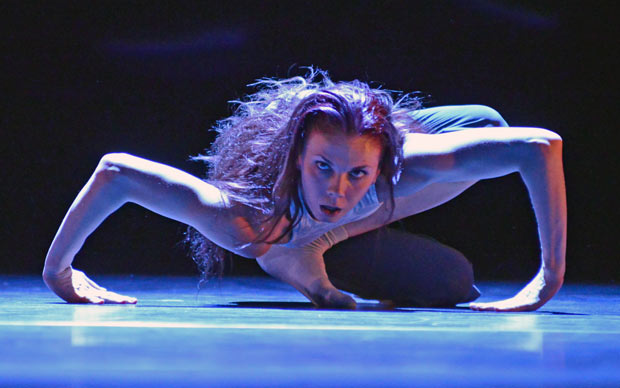
© Dave Morgan. (Click image for larger version)
Natalia Osipova
Qutb, Silent Echo and Run Mary, Run
★★★✰✰
London, Sadler’s Wells
30 June 2016
Gallery of pictures by Dave Morgan
www.instagram.com/nataliaosipova86
Royal Ballet principal Natalia Osipova seems to have the world at her pointe shoes right now – and this contemporary dance programme, commissioned by her and featuring her first UK stage performances with her off-stage partner Sergei Polunin, is the hot ticket of the season. Three of our leading contemporary choreographers added to the megawatt talent of these two Russian dancers (plus Polunin’s bad boy reputation), seems a surefire recipe for success. However, that’s not entirely the case.
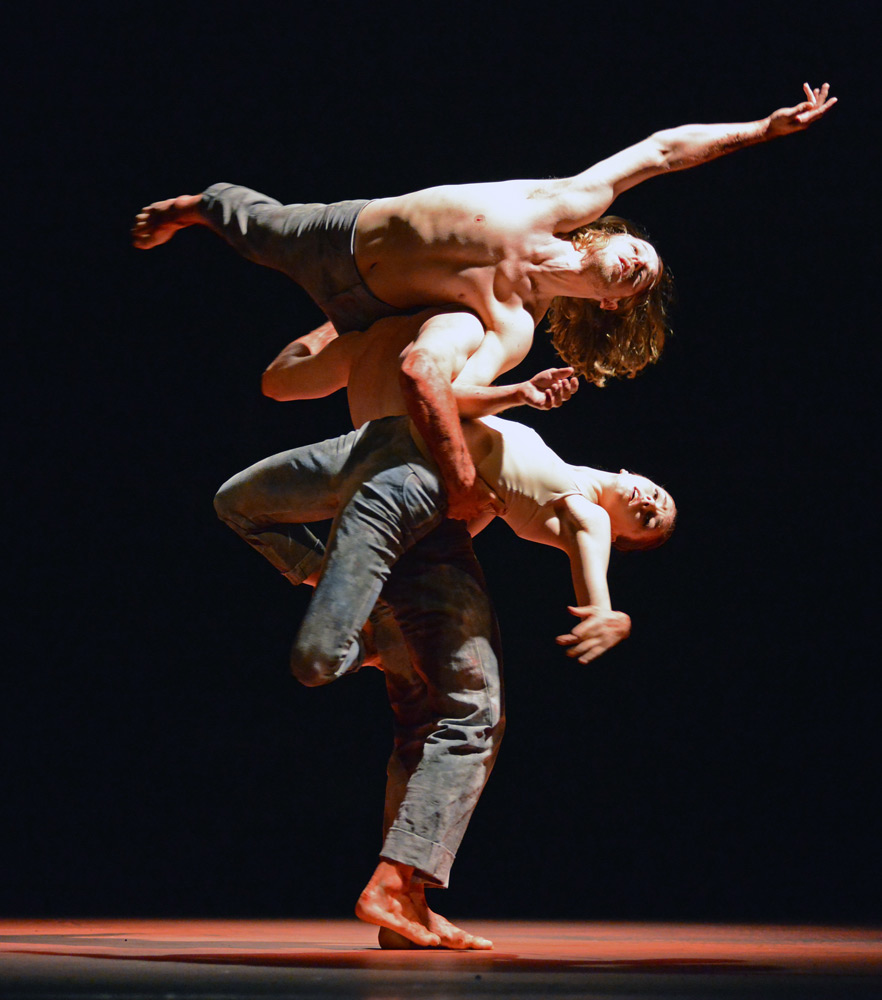
© Dave Morgan. (Click image for larger version)
Sidi Larbi Cherkaoui’s eerie three-hander Qutb unites Osipova with Jason Kittelberger and James O’Hara. It’s interesting to see the movement of these two men, more versed in contemporary dance, set against the star of the show – as they show up Osipova’s reticence (inability?) to let herself go completely. Nevertheless there’s a certain savage power to Qutb, which means “axis” or “pivot” in Arabic, and also has Sufi mystic connotations. The piece begins with the image of an accelerated eclipse on the backcloth; the three dancers slump over each other and twist, meld and flail in an apocalyptic ménage a trois, at times making a febrile lava flow of limbs and torsos as they cling to and support each other. Kittelberger gets the job of lifting sometimes one, sometimes both the others up on his strapping back; Osipova twines herself around her male partners with a contortionist’s skill, at one point launching herself backwards into a perfect arcing C shape as she disengages from Kippelberger’s grip. A heavy, sometimes oppressive soundscape of electronica, Sufi chanting and north African instrumentation – and what looks like traces of blood smeared on Osipova’s vest – add a disturbing frisson. Unfortunately, Qutb outstays its welcome somewhat by losing any narrative drive somewhere in the midst of those writhing bodies and becoming rather too repetitive.
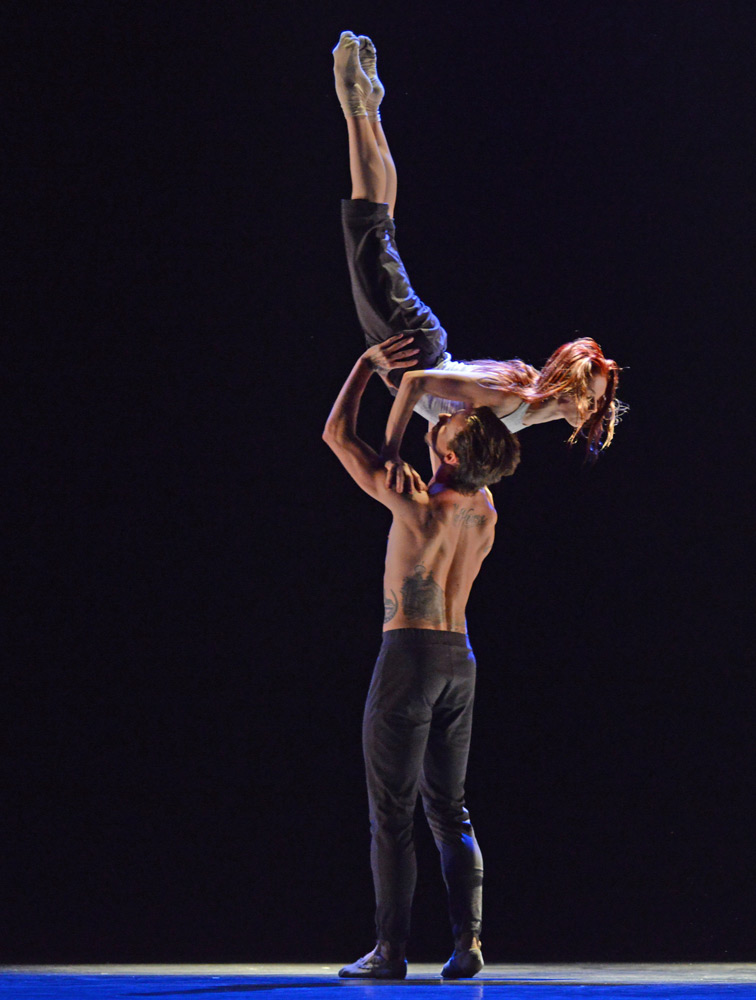
© Dave Morgan. (Click image for larger version)
There’s more to love about the second piece. Russell Maliphant created Silent Echo on the shape of a classical pas de deux – duet, solo, solo, duet – and here that well-worn construction sparks into new life. Osipova and Polunin at first circle around each other and the stage, keeping to their own spotlights as a lugubrious beat marks time. Those loping circles slowly start to tighten up, and finally become razor-sharp pirouettes as the soundscape turns into radio static – Michael Hulls’s lighting meaning their limbs leave sparkler-like traces in the air. Osipova claims the first solo – she’s pugnacious and determined. Polunin, with his tattooed torso on display, is man as machine, building up a display of refined power to James Lavelle’s monumental Trouble in Paradise. Now, having revealed themselves to each other, they’re reunited: the final duet, a cascade of lifts, crackles with mutual fascination and attraction. It’s a scintillating display; Maliphant melds his movements to their classical strengths with canny intuition.
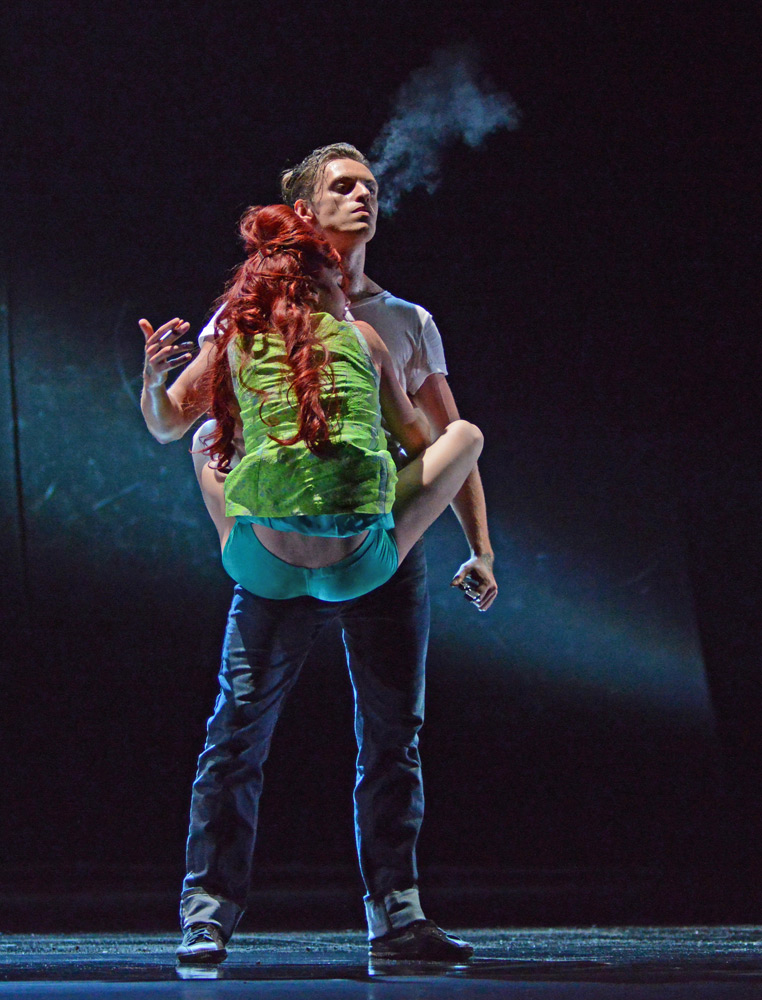
© Dave Morgan. (Click image for larger version)
Finally, Arthur Pita’s Run Mary, Run, a tale of toxic love told backwards, to the “splatter platter” music of The Shangri-Las; inspired in part, we’re told, by the story of Amy Winehouse and Blake Fielder-Civil. Pita’s humour is evident from the first moment, when two hands shoot out of a dirt grave and start twirling and miming to Past, Present and Future. Unfortunately it’s not enough to sustain this piece, which gets bogged down partly by the songs themselves – there seems to be a lot of noodling and time filling, particularly from Osipova, while Mary Weiss’s mournful spoken word sections go on, and on, and on. Osipova’s young and reckless girl, with her long red tresses and lime-green mini dress, is smitten by Polunin’s sneering James Dean-style rocker, in cap-sleeve white T and turned up jeans. Her queasy dependency is best expressed when she wraps herself around his front, legs wound round his waist, like a baby in a papoose, and stays attached while he smokes and boozes. Polunin has the swaggering attitude down pat – but is also convincingly romantic in the post-row make-up sequence that Pita has cleverly devised as a sequence of ever-more daring kisses across Osipova’s contorting body. But Osipova is never entirely convincing in her role; there’s a lack of dramatic commitment here that makes the melodrama overload at the end feel rather unearned.














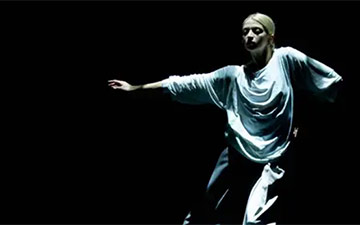


You must be logged in to post a comment.